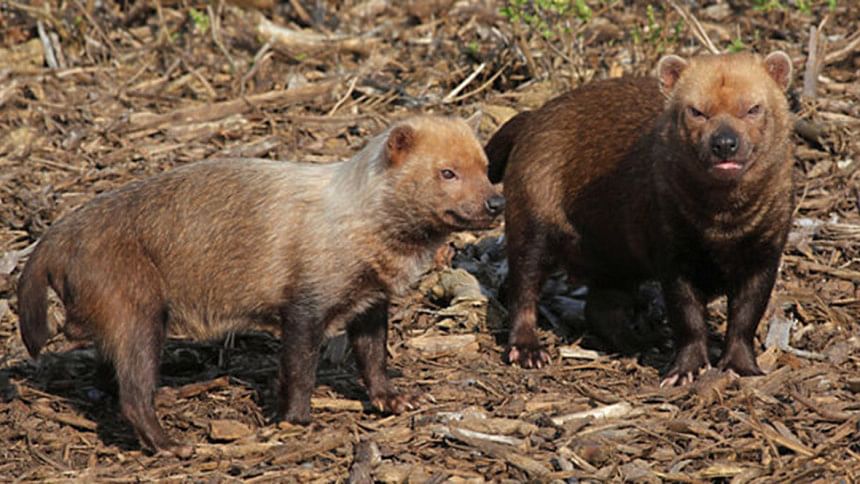Rare, elusive bush dogs photographed in Panama

A rare and elusive canid from Central and South America has been photographed in a camera trap study, reports Discovery News.
The little-seen bush dogs (Speothos venaticus), whose precise distribution still remains in question, run in packs of up to 10 and live primarily in tropical forests.
They grow around 1-foot-tall at the shoulder and feed on mainly rodents and occasionally on armadillos
The distribution of the canid population largely remains an unsettled question. The International Union for Conservation of Nature (IUCN) considers the animal has a widespread range from extreme eastern Central America and northern South America south to Paraguay and northeastern Argentina, reports Discovery News.
However, the IUCN also terms the bush dogs "naturally rare" throughout this region. According to the organization, it has been proven that the species is extremely rare to be located in the wild, which makes it difficult to make estimates of its population trends.
At present, bush dogs are classified as "near threatened" in the IUCN's "red list" of threatened species.
The rare sighting was made by automated camera traps in remote portions of Panama, used by Smithsonian Tropical Research Institute (STRI) researchers for broader study on large mammals such as Jaguars.
The journal, Canid Biology & Conservation, documented the bush dogs sighting in a new study, reports Discovery News.
"The bush dog is one of the rarest species that we photograph," said study co-author Ricardo Moreno in a STRI release.
According to the scientists, the bush dogs were caught on the cameras on just 11 days out of a total of 32,000 camera days (the number of cameras used in the study multiplied by the number of days in use).
The researchers said that Panama can be confirmed as one part of the canid's distribution, reports Discovery News.
"Camera-trap photos taken for the first time in Panama in 2012 and 2015, together with the new sightings, confirm the species' broad and continuous distribution along the Panamanian Isthmus," the authors wrote in their study.
Although Panama is the only country in Central America where the species is known to inhabit, "we think that it will soon cross the border into Costa Rica," Moreno said.
Stronger measures are suggested by Moreno and his co-authors in order to accurately assess population trends for bush dogs in Panama, as rapid deforestation and the decline of prey species may make things difficult for the small canids in the region.

 For all latest news, follow The Daily Star's Google News channel.
For all latest news, follow The Daily Star's Google News channel. 








Comments